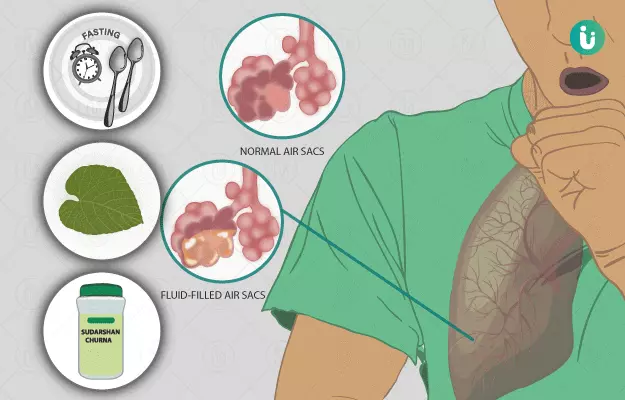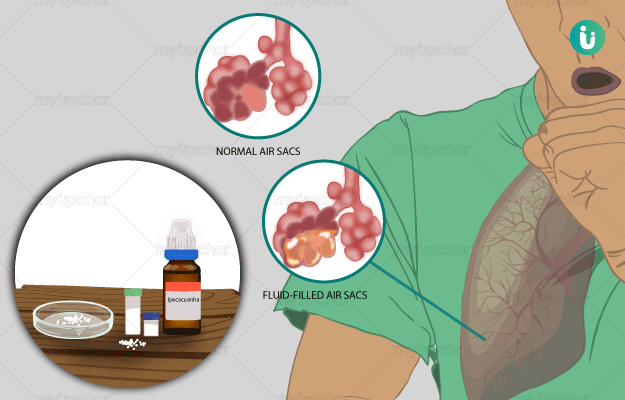Pneumonia is an infectious disease, which mainly affects the air sacs of lungs and has a characteristic inflammatory nature of progression. It is usually caused to due bacteria or virus but drug-induced pneumonia is not uncommon either. Occasionally, pneumonia may occur as a complication of flu. It is one of the most common causes of mortality related to hospital-borne infections.
Pneumonia symptoms may range from mild to severe and include cough, fever, chills, sputum production, breathing difficulty and chest pain. This disease may spread to healthy individuals via coughing, sneezing and, in some cases, even through touch. It can also spread from individuals who are infected but do not show any symptoms of the disease.
Ayurvedic treatment for pneumonia is based on the antibacterial activity of herbs and medicines and aims at removal of vitiated kapha from body. Ayurvedic herbs such as amalaki (Indian gooseberry), kutaja (kurchi), bhringraj (bhangra), tila (sesame), guduchi (giloy, heart-leaved moonseed), vasa (malabar nut) are used for the treatment of pneumonia. Ayurvedic medicines such as gorochanadi vati, sudarshan churna and sanjivani vati and procedures like langhana (fasting) and vamana (medical emesis) are also beneficial in pneumonia treatment.























